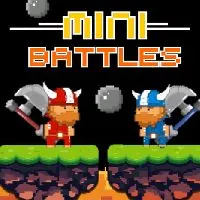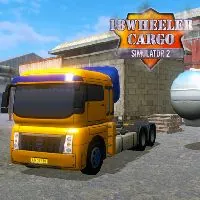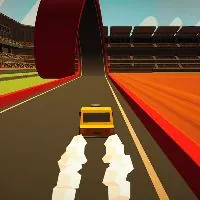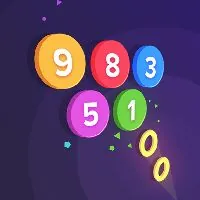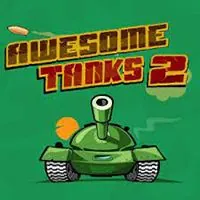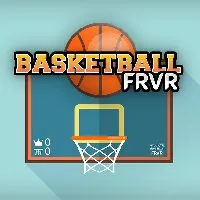BLOCK TOGGLE
Other Unblocked Games Websites
SIMILAR GAMES
Description
Block Toggle - GitLab Games
About Block Toggle - GitLab Games
In the dynamic and ever-evolving landscape of modern software development and game creation, the ability to efficiently manage and manipulate interactive elements is paramount. At GitLab Games, we are dedicated to providing developers and designers with powerful, yet intuitive tools that streamline complex processes. One such innovation is our Block Toggle system, a sophisticated mechanism designed to offer unparalleled control over the visibility, functionality, and interaction states of individual components within a larger project. This feature is not merely a cosmetic enhancement; it represents a fundamental leap forward in how we conceptualize and implement interactive interfaces, offering a robust solution for managing the complexity inherent in sophisticated applications and games. Our commitment to fostering an environment of creative exploration and technical excellence drives us to continually refine and expand our offerings, ensuring that the tools we provide are not only cutting-edge but also deeply practical and user-centric.
Understanding the Core of Block Toggling
The fundamental principle behind our Block Toggle functionality at GitLab Games is the concept of conditional rendering and activation. Imagine a complex user interface or an intricate game environment populated with numerous distinct elements, or "blocks." Each of these blocks might represent a button, a dialogue box, a game asset, a user profile section, or any other interactive or informational component. The Block Toggle system allows us to precisely define when and how these blocks are presented to the user, or when they are actively engaged in the application's logic. This granular control is achieved through a series of configurable parameters that dictate visibility, interactivity, and even the underlying data states associated with each block. By abstracting these complexities into a manageable and accessible system, we empower creators to focus on the creative aspects of their projects, rather than getting bogged down in intricate coding for conditional logic.
Key Features and Applications of Block Toggle
The Block Toggle system at GitLab Games is engineered with a multifaceted approach to problem-solving. Its core utility lies in its ability to dynamically control the presence and state of UI elements. This is particularly useful in scenarios requiring adaptive interfaces, where the content or options presented to the user must change based on their actions, progress, or context within the application or game. For instance, in a game, a tutorial pop-up might be toggled on when a player first encounters a new mechanic, and then toggled off once they have successfully demonstrated understanding. Similarly, in a complex application, a detailed settings panel might remain hidden until a user explicitly chooses to access it, thus decluttering the primary interface and improving user experience.
Beyond simple visibility, our Block Toggle also offers control over the interactive state of blocks. This means that even if a block is visible, it might be temporarily disabled or made non-interactive, preventing unintended user actions. This is crucial for guiding users through workflows, ensuring data integrity, and preventing errors. For example, a "Submit" button might be toggled to an inactive state until all required form fields have been correctly filled. This proactive approach to user interaction significantly enhances the usability and robustness of any application or game.
- Dynamic Visibility Control: Precisely dictate when blocks appear or disappear based on predefined conditions or real-time events. This is essential for creating responsive and adaptive user experiences that change fluidly with user interaction.
- Interactive State Management: Control whether a block is clickable, selectable, or otherwise operable. This ensures that users can only interact with elements that are relevant and active in their current context, preventing errors and guiding their workflow.
- Conditional Logic Integration: Seamlessly integrate with existing project logic to trigger toggles based on user input, game state, data changes, or external events. This allows for deeply customized and context-aware behavior.
- Performance Optimization: By only rendering and activating elements that are currently needed, the Block Toggle system contributes to improved application performance, especially in resource-intensive environments like complex games.
- Modular Design Philosophy: Encourages a modular approach to development, where each block can be designed, tested, and managed independently, making large projects more manageable and scalable.
Implementing Block Toggle in Your Projects
Integrating the Block Toggle system into your projects at GitLab Games is designed to be as straightforward as possible, allowing for rapid development and iteration. Our system provides flexible APIs that can be utilized across a wide range of development frameworks and languages commonly used within our ecosystem. Developers can define specific "toggle groups" which allow for coordinated control over multiple blocks simultaneously. For example, an entire section of a game menu could be toggled on or off as a single unit, simplifying the management of related UI elements.
The configuration of these toggles can be achieved through declarative methods, often involving simple configuration files or intuitive in-editor settings, reducing the need for extensive custom coding. This approach makes the Block Toggle system accessible to developers of all skill levels, from seasoned professionals to those just beginning their journey in software and game development. We provide comprehensive documentation and example implementations to facilitate a smooth integration process, ensuring that our users can leverage the full power of this feature with minimal friction. Our aim is to empower creators by removing technical barriers and allowing them to focus on bringing their unique visions to life.
Advanced Use Cases and Customization
While the fundamental applications of Block Toggle are broad and impactful, its true power is unlocked through advanced customization and integration with specific project requirements. We recognize that each project has unique needs, and our system is built to be extensible. For instance, complex animations and transitions can be seamlessly linked to toggle events, creating sophisticated visual feedback for users. Imagine a dialogue box that doesn't just appear, but elegantly fades into view, or a game element that animates its deactivation. These subtle yet effective touches can significantly elevate the polish and professional feel of any digital creation.
Furthermore, developers can hook into the toggle events to trigger custom logic. This could involve updating game scores, initiating network requests, playing sound effects, or performing any other action relevant to the project's state. The Block Toggle system acts as a central orchestrator, allowing for intricate sequences of events to be managed elegantly. We also support conditional toggles based on complex logical expressions, enabling highly specific and context-aware behavior that adapts dynamically to user actions and game progression. This level of fine-grained control ensures that the user experience remains cohesive and engaging, no matter the complexity of the underlying application or game.
Consider these advanced scenarios:
- Gamified Onboarding: Gradually reveal new game mechanics and UI elements as a player progresses through tutorial levels, using Block Toggle to control the introduction of new challenges and information.
- Adaptive Game Difficulty: Dynamically adjust the availability of certain in-game items or abilities based on player performance, using toggles to enable or disable them as needed to maintain optimal challenge.
- Interactive Data Visualization: Allow users to toggle the visibility of different data layers or analytical perspectives within a complex dashboard, enabling deeper exploration and understanding.
- Dynamic Content Layouts: Modify the arrangement and visibility of content sections on a webpage or in an application based on user preferences, device capabilities, or current session data.
- State-Aware Menus: Implement context-sensitive menus that only display relevant options based on the currently selected object or active mode within the application.
The GitLab Games Commitment to Innovation
At GitLab Games, our mission is to empower creators with the tools they need to build the next generation of interactive experiences. The Block Toggle system is a testament to this commitment, offering a powerful, flexible, and user-friendly solution for managing complexity in modern development. We continuously invest in research and development to ensure that our features remain at the forefront of technological advancement, providing our community with the means to innovate and excel. Our platform is built on principles of collaboration and open development, fostering an environment where ideas can flourish and translate into tangible, impactful tools. We believe that by providing such sophisticated yet accessible mechanisms, we can unlock new possibilities for developers and designers worldwide, helping them to create more engaging, intuitive, and memorable digital products.
We are constantly exploring new avenues for enhancing Block Toggle and other core functionalities, driven by the feedback and innovations of our vibrant user community. This iterative process of development ensures that our tools not only meet current industry standards but also anticipate future trends and user needs. The robust nature of the Block Toggle system, coupled with its inherent flexibility, makes it an indispensable asset for any project aiming for a high degree of interactivity and user engagement. Our ongoing dedication to providing comprehensive support, extensive documentation, and a collaborative development environment ensures that every user can maximize the potential of our tools and achieve their creative goals.
Block Toggle - GitLab Games
About Block Toggle - GitLab Games
In the dynamic and ever-evolving landscape of digital entertainment and interactive applications, the concept of block toggling emerges as a fundamental yet profoundly impactful mechanism. At GitLab Games, we are dedicated to exploring and implementing innovative solutions that enhance user experience and streamline development processes. Our approach to block toggling within the context of our gaming projects and software development endeavors is meticulously designed to offer both clarity and efficiency. This principle, while seemingly simple, forms the backbone of complex interactions, enabling users to effortlessly switch between different states, functionalities, or visual representations within an application. Understanding and mastering block toggling is paramount for creating intuitive and engaging digital experiences that resonate with users and stand out in a competitive market. We believe that by focusing on robust and elegant implementations of such core functionalities, we can elevate the overall quality and accessibility of the products we develop and contribute to the broader community.
Understanding the Core Concept of Block Toggling
At its heart, block toggling refers to the action of switching a particular segment or "block" of an interface or application between two or more distinct states. This could manifest in numerous ways, such as showing or hiding a menu, expanding or collapsing a section of content, activating or deactivating a feature, or changing the visual theme of an application. The key characteristic of effective block toggling is its immediate and predictable responsiveness. Users expect a seamless transition, with no perceptible delays or unexpected behaviors. For developers, implementing this requires a deep understanding of state management, event handling, and user interface design principles. The goal is to create an experience where the user's intent is immediately translated into a clear and satisfying change within the application. This is not merely about visual alteration; it often involves underlying functional changes that impact how the application behaves.
Applications of Block Toggling in GitLab Games Projects
Within the diverse array of projects hosted at GitLab Games, the application of block toggling is both widespread and critical. Consider the user interfaces of our games. A common example is the toggling of inventory screens, character customization panels, or map views. When a player needs to access their items, they expect a simple click or keypress to reveal a meticulously organized inventory block. Similarly, collapsing this block frees up valuable screen real estate for crucial gameplay. Beyond gaming, in our software development initiatives, block toggling plays a vital role in managing complex application interfaces. This includes showing or hiding advanced settings panels, switching between different editing modes in a content management system, or revealing detailed information panes within data visualization tools. Each instance of block toggling is carefully considered to ensure it enhances, rather than hinders, the user's interaction with the application. We meticulously craft these toggles to be intuitive, accessible, and aesthetically pleasing, contributing to a polished and professional user experience across all our platforms.
Enhancing User Experience Through Intuitive Toggles
The success of any digital product hinges significantly on its user experience. Block toggling, when implemented thoughtfully, becomes a powerful tool for achieving this. An intuitive toggle is one that requires minimal cognitive load for the user. They should instantly understand what action will be performed when they interact with the toggle element. This often involves clear visual cues, such as icons, labels, or distinct button styles, that indicate the current state and the potential for change. For instance, a '+' icon might transform into a '-' icon when a content block is expanded, providing immediate visual feedback. Conversely, a well-designed toggle should also be forgiving. Users might accidentally click or tap an element, and the system should gracefully handle such interactions without disrupting their workflow. At GitLab Games, we prioritize usability testing and iterative design to refine our block toggling mechanisms, ensuring they are as accessible and user-friendly as possible. This dedication to user-centric design is a cornerstone of our development philosophy.
Technical Considerations for Robust Block Toggling
Implementing block toggling effectively involves a number of technical considerations that are crucial for performance and maintainability. We often leverage modern front-end frameworks and libraries to manage the state changes associated with toggling. This ensures that the UI updates efficiently and without causing unnecessary re-renders, which can impact performance, especially in complex applications. Careful consideration is given to the accessibility of toggled elements. This includes ensuring that screen readers can properly interpret the state changes and that keyboard navigation is fully supported, allowing users of all abilities to interact with the application seamlessly. Performance optimization is another key area. Techniques such as lazy loading content that is hidden behind a toggle can significantly improve initial load times. We also pay close attention to the animation and transition effects. While subtle animations can enhance the user experience by providing visual feedback and making transitions smoother, overly complex or lengthy animations can become a hindrance. Our developers meticulously balance aesthetic appeal with functional efficiency, ensuring that every block toggle contributes positively to the overall application performance.
Case Study: Implementing Dynamic Content Sections
One of the most compelling applications of block toggling is in the management of dynamic content sections within web applications and game interfaces. Consider a detailed documentation portal or an in-game tutorial system. Instead of presenting all information at once, which can be overwhelming, we utilize toggles to reveal content incrementally. For example, a primary section might be visible, with an option to "Show Details" or "Expand Section." Upon activation, a new block of text, images, or interactive elements becomes visible. This not only improves readability but also allows users to focus on the information most relevant to them at any given moment. This approach is particularly useful for progressive disclosure, where complex systems are broken down into manageable parts. We have successfully implemented this pattern in various GitLab Games projects, allowing users to access advanced configurations, detailed game lore, or in-depth technical explanations through a series of well-defined toggles. The ability to seamlessly expand and collapse these content blocks ensures a clean, organized, and highly navigable user experience.
The Role of State Management in Block Toggling
Effective block toggling is intrinsically linked to robust state management. The "state" of an application refers to the current condition or status of its various components and data. When a user interacts with a toggle, they are, in essence, changing the state of a specific block from one value to another (e.g., `hidden` to `visible`, `collapsed` to `expanded`). Our development process emphasizes clear and predictable state management strategies. This involves defining states explicitly, ensuring that transitions between states are handled consistently, and providing mechanisms for updating the UI in response to these state changes. Libraries and frameworks often provide built-in tools for state management, such as component props, context APIs, or dedicated state management libraries, which we utilize to ensure that our block toggling implementations are reliable and scalable. This meticulous attention to state management prevents bugs, simplifies debugging, and makes it easier to maintain and extend our applications over time.
Advanced Techniques in Block Toggling Implementation
Beyond the fundamental concepts, we also explore and implement advanced techniques to push the boundaries of what block toggling can achieve. This includes techniques for performance optimization, such as code splitting and virtualization, where only the necessary components are loaded and rendered when a block is toggled into view. We also investigate animation libraries to create sophisticated and engaging transitions that guide the user's attention and provide delightful micro-interactions. Furthermore, in complex scenarios, we might employ conditional rendering logic that goes beyond simple visibility toggles. This could involve completely swapping out components or reconfiguring the DOM structure based on the activated state of a toggle, ensuring that the application's behavior is precisely tailored to the user's current interaction context. These advanced methodologies allow us to build highly responsive, performant, and visually sophisticated applications that offer an unparalleled user experience.
Accessibility Standards for Toggled Elements
At GitLab Games, we are deeply committed to creating inclusive digital experiences. This commitment extends to our implementation of block toggling, where adhering to accessibility standards is paramount. We ensure that all toggled elements are navigable via keyboard, with clear focus indicators that guide users. The states of these toggles (e.g., expanded, collapsed, hidden, visible) are programmatically conveyed to assistive technologies like screen readers, using ARIA attributes where appropriate. This ensures that users who rely on these technologies can understand the current status of the interface and interact with it effectively. We also consider contrast ratios for visual cues and ensure that the functional purpose of a toggle is clear regardless of color alone. By integrating accessibility from the outset of our development process, we aim to make our games and applications usable and enjoyable for everyone.
Future Directions for Block Toggling at GitLab Games
The evolution of user interface design and software development is continuous, and our approach to block toggling is no exception. We are constantly exploring emerging trends and technologies that can enhance this fundamental interaction pattern. This includes investigating more sophisticated animation techniques powered by WebGL or advanced CSS for smoother and more visually rich transitions. We are also looking into AI driven adaptive interfaces that might dynamically toggle content or features based on user behavior and preferences, creating truly personalized experiences. Furthermore, the integration of block toggling with augmented reality and virtual reality interfaces presents exciting new avenues for immersive and interactive applications. Our goal is to remain at the forefront of these developments, ensuring that GitLab Games continues to deliver innovative and user friendly digital products that captivate and engage our audience. The versatility and power of well executed block toggling ensure its continued relevance and importance in the digital realm.
Play Block Toggle for free on GitLab Games, where we offer a dynamic platform featuring thousands of the best unblocked games online. Our extensive library ensures pure enjoyment with an ad-free experience, keeping you immersed in the action without distractions. Accessible from school, work, or home, our Gitlab games deliver seamless fun anywhere you are. We’ve streamlined the experience—play effortlessly with your keyboard or a simple click, tailored to how you like to game. Dive into our collection of unblocked games, including popular categories like unblocked games 66, unblocked games wtf and cool math games Gitlab, and enjoy entertainment that’s always within reach and endlessly captivating.
